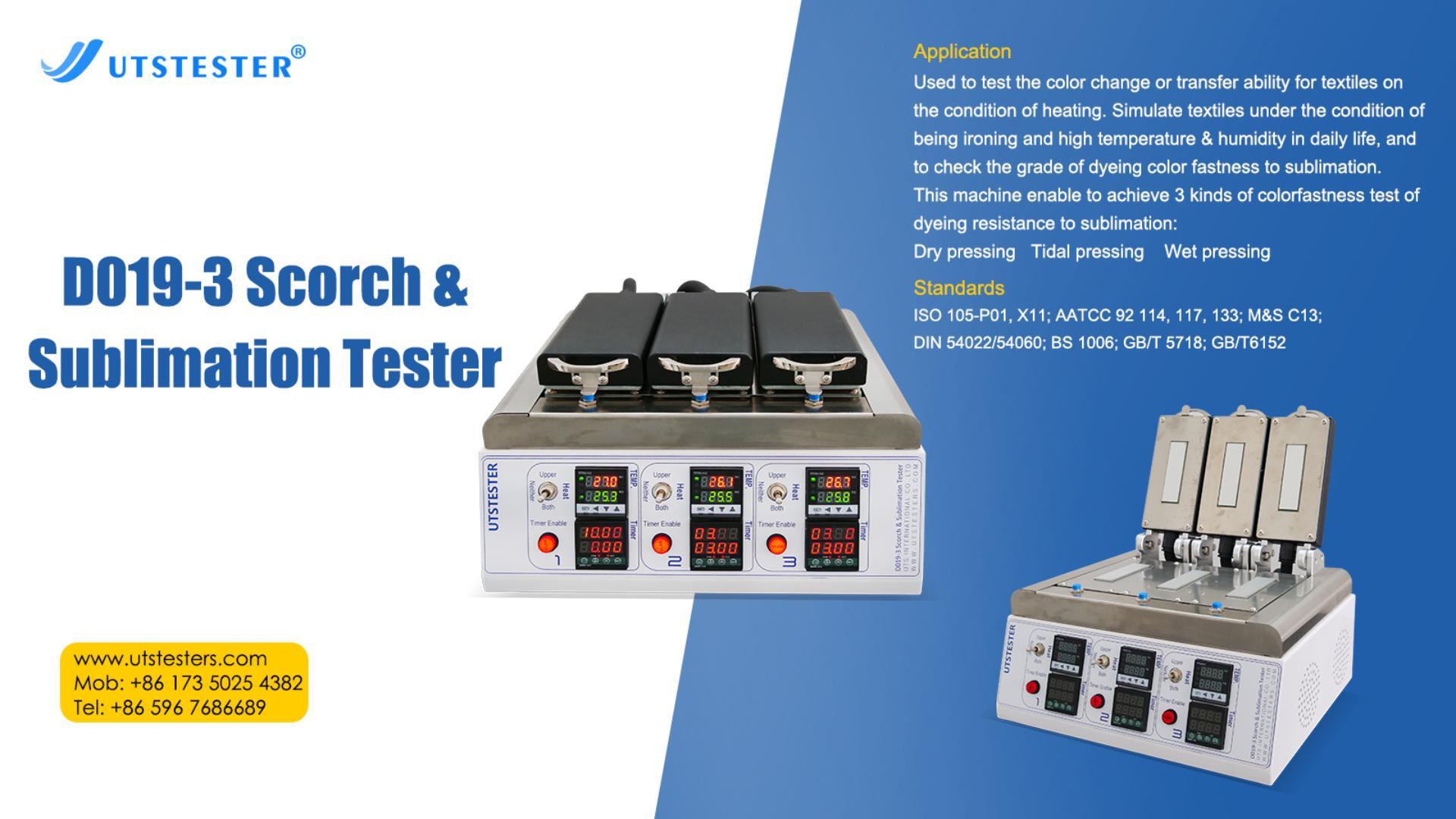I. Instrument introduction
The heat and sublimation fastness tester is a professional equipment used to determine the color stability of textiles under high temperature conditions. It mainly evaluates two properties:
1. Heat fastness: color change when the material contacts a high temperature surface
2. Sublimation fastness: color migration caused by the dye directly changing from solid to gas at high temperature
II. Preparation before testing
1. Sample preparation
Cut a sample with a size of 40mm×100mm
The sample needs to be balanced under standard atmospheric conditions (20±2℃, 65±2%RH) for 24 hours
Prepare multi-fiber adjacent fabrics or single-fiber adjacent fabrics of the same size
2. Instrument inspection
Confirm that the surface of the heating plate is clean and free of contamination
Check the accuracy of the temperature control system
Ensure that the pressure device is working properly
Calibrate the temperature sensor
III. Operation steps
Heat fastness test
1. Turn on the power and preheat the equipment to the set temperature (usually 180-210℃)
2. Lay the sample flat on the heating plate
3. Lower the pressure device and apply a standard pressure of (4±1) kPa
4. Start timing and keep contact for 30 seconds
5. Immediately raise the pressure device after the time is up and remove the sample
6. Cool the sample under standard atmospheric conditions
7. Use a gray sample card to assess the discoloration level
Sublimation fastness test
1. Overlap the sample with the front of the adjacent fabric
2. Place in a tester that has been preheated to the set temperature (temperature is selected according to the material type)
3. Apply standard pressure (4±1 kPa)
4. Keep for 30 seconds to 4 minutes (according to the test standard requirements)
5. Take out the sample and cool to room temperature
6. Assess the discoloration of the sample and the staining level of the adjacent fabric respectively
IV. Temperature selection reference
Polyester fabric: 180℃ or 210℃
Other synthetic fibers: adjusted according to the fiber melting point
Natural fibers: usually 150-180℃
V. Result evaluation
1. Use a standard gray sample card to assess:
Discoloration level (1-5, 5 is the best)
Staining level (1-5, 5 is the best)
2. Record the test conditions (temperature, time, pressure)
3. Take photos before and after the test
Related standards
ISO 105-X11: Textile color fastness test
AATCC 133: Heat color fastness
GB/T 8427: Textile color fastness test

Email: hello@utstesters.com
Direct: + 86 152 6060 5085
Tel: +86-596-7686689
Web: www.utstesters.com
